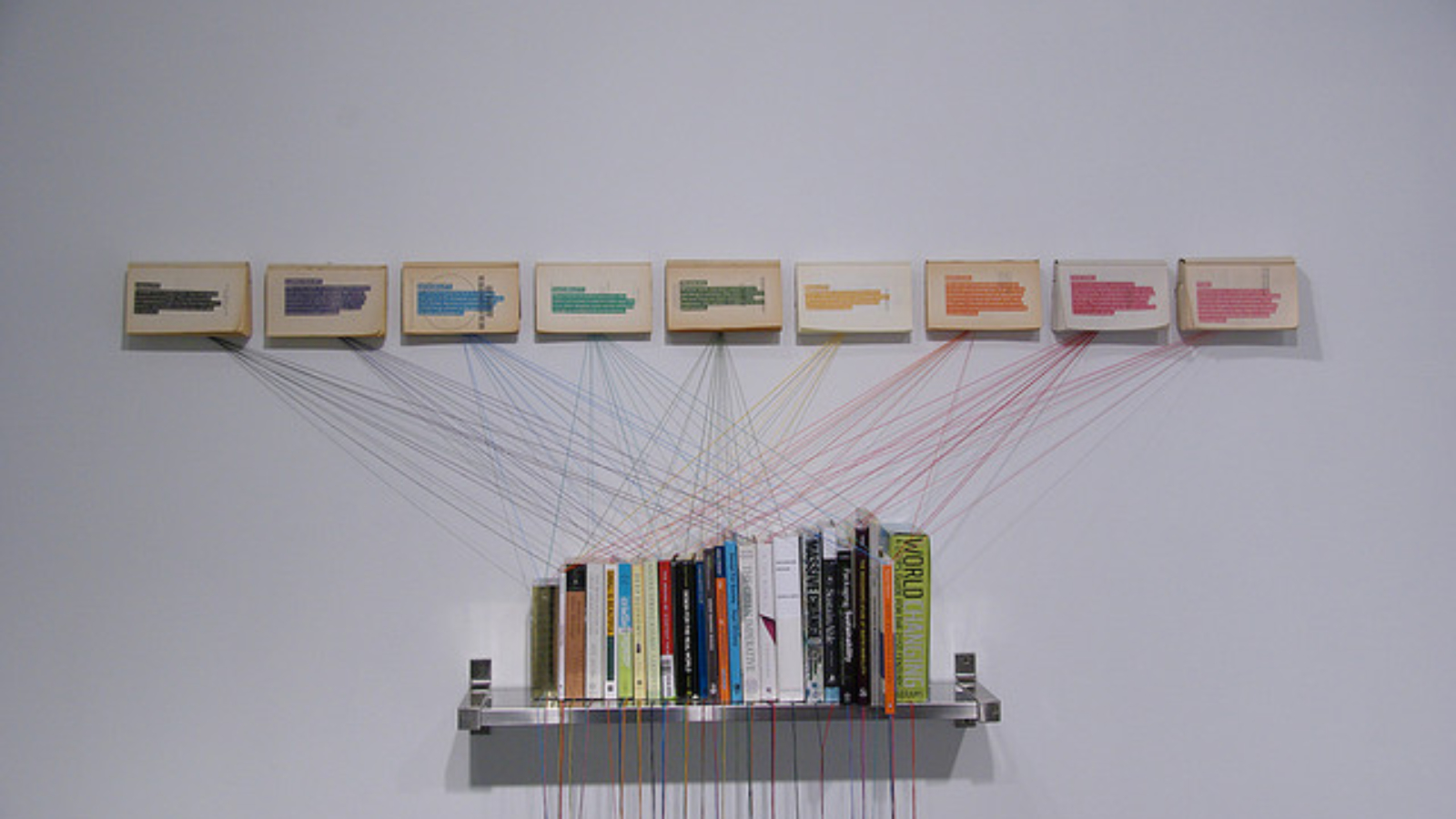Part III of "Archiving in the 21st Century." Read parts I, II, and IV.
by Anais Borja
The Ransom Center purchased its first born-digital artifacts in 2005, when it acquired nearly 4,800 files from the digital media scholar Michael Joyce. The author of the seminal work of hypertext fiction, afternoon, a story, Joyce was an apt choice for Ransom Center’s first digital archaeology process. In 2006, Matthew Kirschenbaum, National Endowment of the Humanities researcher, visited Austin to experience the Joyce archive. In a paper he wrote detailing his visit, he enumerated the ways that it fell short of his expectations, noting that while the electronic repository was online, he could only access the archives in a dedicated laptop in a specialized reading room. He was not allowed to make copies of the electronic materials, and screenshots “must be printed out and paid for as though they were Xeroxes.”
If the goal is to preserve authors’ works and the environment in which they are created, the migration of Joyce’s material to its digital repository insufficiently preserved his highly dynamic text. Joyce himself has suggested that he “wasn’t thinking of ‘long term access’” and that this is the “critical point made by Kirschenbaum and the new archivists—the experience of the hypertext might be as lost.” Joyce related his concern that “as an electronic author, to preserve a reader’s ‘end-user experience’ means something quite important.”
afternoon, a story was developed by Joyce and his former students in the 1980s, and written in what was then thought to be the lingua franca, that would “service subsequent operating system updates.” The fact that, in 2010, I didn’t have the right browser (the Netscape Navigator 4.0x that would have been compatible with my Mac OS was no longer operable off the Netscape archive) dramatizes the intimate relationship between access and preservation.
Joyce bemusedly emailed me about the experiment: “I think that we were all shocked that Javascript was abandoned, or at least altered, to the extent that it no longer ran after certain browsers. Just as the Animal House saying goes, ‘we fucked up, we trusted the technology.’”
While the files of Joyce’s archives were preserved, their format was not. One of the Ransom Center’s purported goals was to provide user access to Storyspace—the platform Joyce had originally created in—but technical limitations prevented total emulation.
In 2007, Emory acquired Salman Rushdie’s papers, which included a “hundred linear feet of his paper material, including diaries, notebooks, library books, first-edition novels, notes scribbled on napkins, but also forty thousand files and eighteen gigabytes of data on a Mac desktop, three Mac laptops, and an external hard drive.” Much has been written about Emory’s important achievement, but it should be noted that Emory only focused on Rushdie’s Macintosh Performa 5400 to test the emulation of the complete desktop environment.
As the authors of “Digital Materiality” note, Rushdie’s use of Stickies (electronic Post-It notes) on his early Mac “provides insights into [Rushdie’s] tendencies to meld the personal and the literary” and reinforces the “importance of providing both file-level access and operating system-level access.” According Kenneth Thibodeau, in his report on “The State of Digital Preservation,” Emory’s emulation is technically a step in the right direction but ultimately a deficient one.
Advances made on a Netherlands emulation project called Dioscuri “recreates the individual components that together construct the hardware environment” but “still only recreates a very small portion of the hardware and software technology” and can only run on a computer that can run a Java Virtual Machine. Any preservation strategy, Thibodeau continues, that “relies on specific software is carrying all the problems associated with those products into the future.” Rushdie’s archive alone included over 40,000 files from four different computer models. “With new versions released every 18-24 months, over 25-years or longer, one would need to support thousands of combinations of applications, utilities, operating systems, and formats,” Thibodeau concludes.
Technical impracticalities aside, the joint authors of “Digital Materiality” cite the emulation experiment and Rushdie’s screen size to illustrate the crucial dynamic between software and its original hardware. Thibodeau defines successfully preserving digital artifacts as “not whether they remain true to some given technological materialization, but whether they continue to provide authentic evidence of the activities in which they were created.” Indeed, they point out that screen resolution and the physical size of the display hardware might be crucial to future literary scholars interested in an author’s composition process.
As playwright Terrence McNally’s WordPerfect document suggests: “This is the 22nd line. After I finish it in two more, the screen should begin to move upwards and I will only be seeing the last 25 lines. It is not possible to see an entire document when you work with a computer.” Fleeting moments like these recall the L’ecriture automatique of the early Surrealists, whose archival experiments Sven Spieker describes in his book The Big Archive: Art from Bureaucracy as an attempt “to reveal the subliminal principles of its [the archives’] temporal and spatial organization.” Even if the Gestalt Theory of the literary archive would suggest that we are greater than the sum of our scraps, the Creator of born-digital worlds is both a product and by-product of that world.
Part III of "Archiving in the 21st Century." Read parts I, II, and IV.
